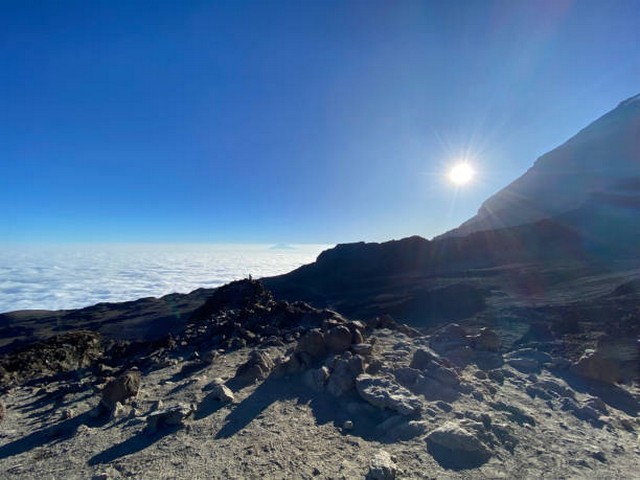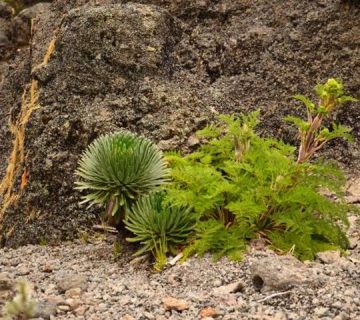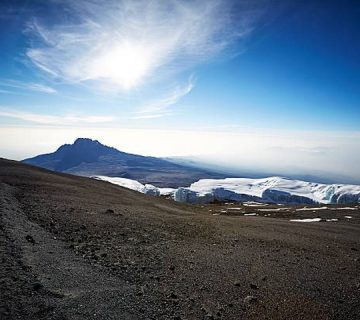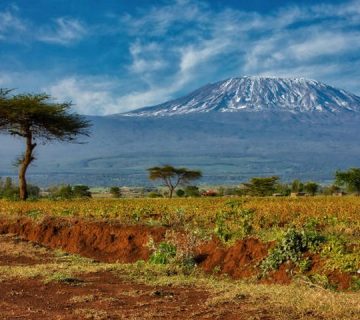How To Layer Clothing For Kilimanjaro Summit: A Guide by Kilimanjaro Centre For Trekking and Ecotourism (KCTE)
Preparation Meets Opportunity at the Roof of Africa
Standing tall as a beacon of adventure, Mount Kilimanjaro calls to the hearts of trekkers and dreamers alike, inviting them to tread its ancient paths and conquer its snowy summit. But as any seasoned climber will tell you, the secret to reaching the top is not only in your spirit but also significantly in how you dress for the occasion. At the Kilimanjaro Centre For Trekking and Ecotourism (KCTE), we understand that preparing for Kilimanjaro is an art form, particularly when it comes to layering your clothing. So, let’s embark on a journey together to learn how to layer clothing for Kilimanjaro’s summit – ensuring your adventure is as breathtaking as the views from Uhuru Peak.
Why Layering?
The weather on Mount Kilimanjaro is a force to be reckoned with. From tropical warmth at the base to icy cold at the summit, temperatures can drastically change, making proper clothing essential. Layering your clothes provides flexibility and allows you to adjust to different temperatures quickly and efficiently, thereby maintaining comfort throughout your climb.
The Art of Layering: Your Clothing Strategy for Kilimanjaro
Base Layer: Your Second Skin
Purpose: Moisture management and skin protection.
Start with a snug, moisture-wicking base layer. This layer is crucial as it keeps sweat away from your skin, making you feel dry and comfortable. Opt for materials like merino wool or synthetic fibers, as cotton tends to retain moisture, which can lead to discomfort and chills.
Mid Layer: The Insulator
Purpose: Insulation and warmth retention.
The mid layer acts as your primary insulator and is essential for retaining body heat. Fleece jackets or down vests are preferred choices. They are lightweight yet provide substantial warmth without the bulk. Remember, the climb involves active periods and rest periods, so this layer must be easy to put on and take off as your body temperature changes.
Outer Layer: The Protector
Purpose: Shield against wind, rain, and snow.
The outer layer, or shell layer, is your primary defense against the elements. A good quality, durable, windproof, and waterproof jacket is non-negotiable. This layer should have breathable properties to prevent moisture from being trapped inside, which could lead to dampness and cold.
Additional Gear: Extremities Matter
Don’t forget your hands, head, and feet. A warm hat or balaclava, gloves, and thermal socks are indispensable. These parts of the body lose heat quickly and require protection, especially as you approach the summit.
Practical Tips for Layering on Kilimanjaro
Fit and Comfort
Ensure your layers fit properly. Too tight, and you risk cutting off circulation and mobility; too loose, and you may not insulate effectively. Aim for a comfortable fit that allows for freedom of movement.
Accessibility
Pack layers in a way that they are easily accessible. Weather on Kilimanjaro can change rapidly, and you’ll want to be able to reach your rain jacket or extra fleece quickly.
Practice Makes Perfect
Before you embark on your Kilimanjaro adventure, test your layering system during your training hikes to adjust and perfect your choices based on real experience.
Bringing It All Together: Climbing Kilimanjaro with KCTE
Conquering Kilimanjaro is a feat that is as mental as it is physical. Proper preparation, which includes mastering the art of layering, sets the foundation for a successful summit attempt. At Kilimanjaro Centre For Trekking and Ecotourism (KCTE), we stand ready to guide you up this majestic mountain, ensuring you are well-prepared, safe, and inspired every step of the way.
Why Choose KCTE for Your Kilimanjaro Adventure?
With years of experience and a deep passion for Tanzanian landscapes, our guides are not only experts in navigation but also in ensuring you experience the rich culture and natural beauty of Kilimanjaro. Our tailored approach means you get the support and encouragement you need, tailored to your physical abilities and personal aspirations.
FAQs: Layering Clothing for Kilimanjaro
Q: How many layers should I wear to the Kilimanjaro summit?
A: Typically, three main layers are essential – base, mid, and outer. However, consider adding extra insulating layers as you reach higher altitudes.
Q: Can I rent clothing gear for my Kilimanjaro climb?
A: Yes, KCTE offers rental options for essential gear. However, for hygiene and comfort, we recommend bringing personal items such as base layers.
Q: What should I avoid wearing on Kilimanjaro?
A: Avoid cotton as it retains moisture. Also, steer clear of excessively bulky clothing that can hinder movement.
In conclusion, mastering how to layer clothing for Kilimanjaro is crucial for a comfortable and successful summit. Each layer has a purpose, and together, they work to keep you warm, dry, and protected. Ready to take on the challenge? Book your climb with Kilimanjaro Centre For Trekking and Ecotourism (KCTE) today and step into the adventure of a lifetime. The roof of Africa awaits, and so does the journey of discovering what you’re truly capable of achieving.




